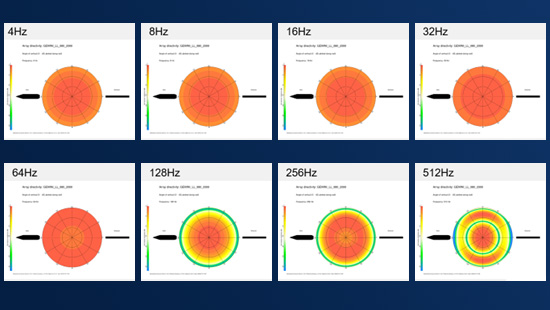First Published: First Break, Vol. 41, November 2023 by Marc Rocke, Carsten Udengaard, David Brookes, Curt Schneider – TGS
Abstract
The resistance of low frequency seismic energy to scattering and absorption, and its resulting ability to be recorded over long ray paths through attenuating media is well established. This relative resistance to scattering and attenuation makes it vital for capturing information with depth and offset, both for model building and illumination. There is likely no better example of this than modern long offset OBN surveys of the Gulf of Mexico, however the importance of good quality low frequencies in unravelling imaging challenges below complex overburden such as shallow gas, carbonates, salt, and volcanics is well documented. Consequently, interest in recording low frequencies in the field extends beyond OBN surveys to include single vessel and multi-vessel towed streamer designs. We have seen strong focus on designing sources that produce rich low frequencies over the last decade as a result.
Introduction: The case for broadband via low frequency octaves
One area of focus for low frequency seismic data in the last decade is as an effective mitigation against cycle skipping in full waveform inversion (FWI). Although some processing mitigations have been developed, the availability of good low frequencies significantly reduces the risk and effort required to arrive at an accurate velocity model in a broad range of settings. This was a clear driver for investment in improving low frequency data quality retrieved in the field early on. Dellinger et al. 2016, Brenders et al. 2018 and others described the use of Wolfspar, a marine vibratory source in the form of a large mechanical bubble that was designed, built, and tested over an 8-year period starting in 2007. Wolfspar produced long sweeps in the 1.4 Hz to 2.5 Hz range on a very sparse grid suited for dedicated FWI velocity model building, with the migrated image produced using airgun array data. Ronen and Chelminski (2017) described the tuned pulse source (TPS), as a single-element pneumatic point source that produces rich low frequencies by emitting a large oscillating air bubble. Brittan et al. 2020 described the successful use of a single-element pneumatic point source, Gemini, to achieve improved FWI results as a result of enhanced signal-to-noise between 1.5 Hz and 4 Hz.
In addition to discussing the benefits of good low frequencies for FWI model building, and arguably of comparable importance, ten Kroode et al. (2013) demonstrated the importance of low frequencies in reducing source wavelet sidelobes, thereby increasing the resolution of the final image. Notably, extending the source bandwidth to include additional low frequency octaves also means retaining good signal-to-noise at other seismic frequencies typically present after migration. These recorded imaging frequencies are no doubt a function of the geology being surveyed, the density of the survey geometry, and the noise floor of the acquisition system being used. However, a broadband source wavelet that includes additional low octaves ensures sharper resolution and more interpretable image with clearer definition of seismic events.
If we can accept that low frequency content is indeed important in the context of a broadband source output, it is interesting to consider that airgun arrays, by design, are comparatively ineffective at generating rich low frequencies. When designing an array, the largest cluster in the array, or primary tuning element, is selected based on the desired resonance frequency or low frequency peak in the target signature. A diversity of gun volumes is then selected to attenuate the bubble energy and flatten the amplitude spectrum of the far-field signature. On the time domain far-field signature, this results in a sharp peak with minimal trailing bubble, at which point the array is said to have a large peak-to-bubble ratio. The total number of available stations within an array, 18 to 21 in the case of a 3-string array, and available compressor capacity limits the range of volumes that can be used to achieve a flat spectrum, thereby limiting the size of the primary tuning element and thus the low frequency amplitudes that can be achieved. Operationally, there is also a significant downtime consideration to using large (approximately greater than 300 in3) guns within arrays, which is often a limiting factor.

Modeled source directivity of a Gemini 4,000 in3 unit showing point source nature for frequencies of 256 Hz and below
By contrast, single-element pneumatic point sources leverage the low resonance frequencies of very large bubbles emitted from a single firing chamber with each shot. As opposed to incorporating a diversity of guns to suppress the bubble of the primary tuning element, as is the case with array design, the entire air budget for the source is directed to a single large element. Similar to the mechanical bubble of Wolfspar, a large reverberating air bubble is generated. In contrast to Wolfspar, which requires the impulsive signature of airgun arrays to provide mid-band frequencies for imaging, the acoustic signature generated by single-element pneumatic sources is led by an initial pulse, which provides mid-frequency amplitudes for imaging. Gemini, in particular, uses industry-standard bolt guns mated to its large firing chamber, which results in mid-frequency spectral characteristics comparable to conventional arrays, albeit at reduced amplitudes.
Read the full article here.

